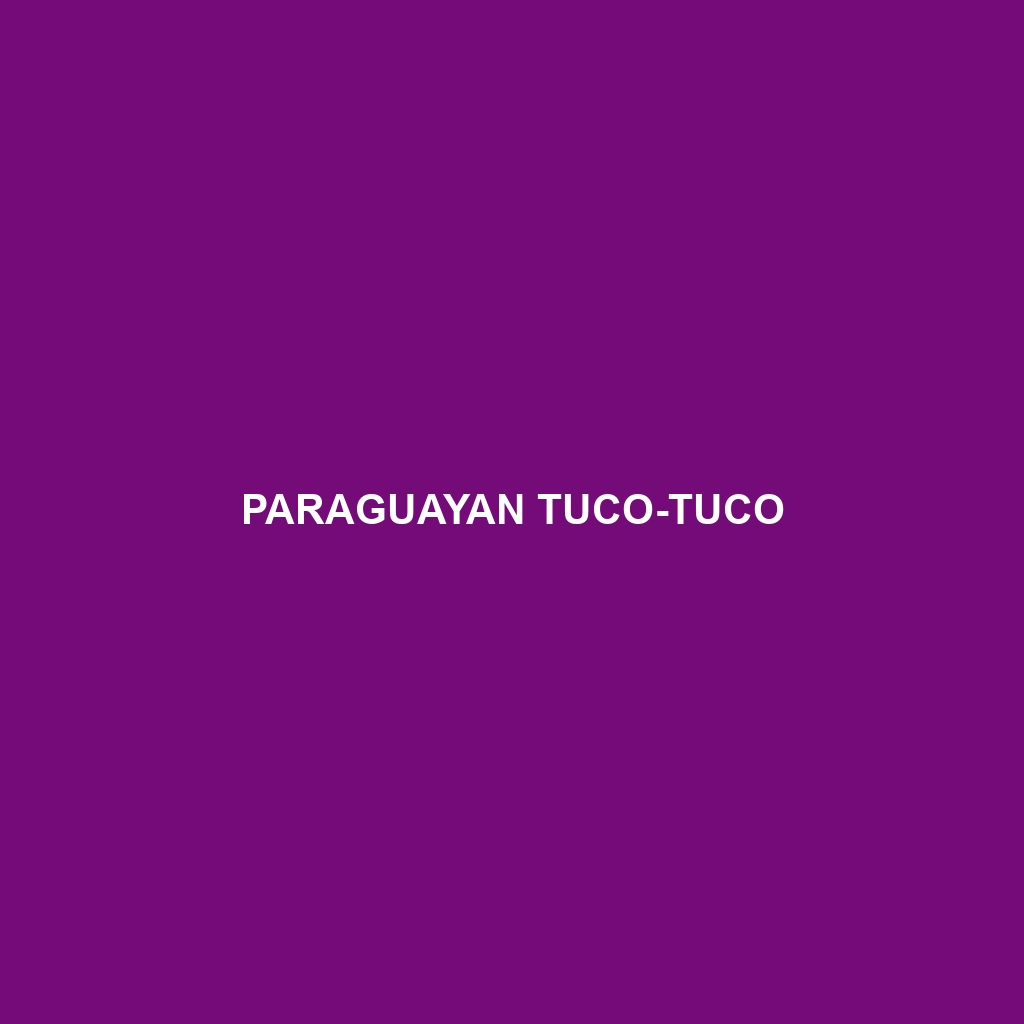Paraguayan Tuco-tuco
Common Name: Paraguayan Tuco-tuco
Scientific Name: Ctenomys paraguayensis
Habitat
The Paraguayan Tuco-tuco is primarily found in the grassy plains and scrubland regions of Paraguay, particularly in the Atlantic Forest area. These rodents typically inhabit well-drained soils, where they create elaborate burrow systems. Their preference for open grasslands allows them to easily construct their homes, which serve as protection from predators.
Physical Characteristics
The Paraguayan Tuco-tuco is a medium-sized rodent, averaging around 22 to 30 centimeters in length, excluding the tail. They have a stout, cylindrical body covered in dense fur that varies in color from light brown to dark grey, blending seamlessly with their natural habitat. Notable features include their large, powerful claws adapted for digging, small eyes, and a pronounced snout that allows them to forage effectively.
Behavior
This species is primarily nocturnal, exhibiting behaviors that are typical of subterranean rodents. Paraguayan Tuco-tucos are highly territorial, often engaging in vocalizations to communicate with each other, especially during mating season. They are adept diggers, spending a significant amount of their time underground, which helps them avoid predators and maintain social structures.
Diet
Paraguayan Tuco-tucos are herbivorous, primarily feeding on roots, tubers, and various forms of vegetation found in their habitat. Their diet is rich in fibrous plant material, which they access by digging extensively underground. This feeding behavior not only sustains them but also plays a crucial role in soil aeration and nutrient cycling in their ecosystem.
Reproduction
The reproductive season for the Paraguayan Tuco-tuco typically occurs in the spring and summer months, with females giving birth to litters of 2 to 5 offspring. The young are born altricial, meaning they are initially undeveloped and reliant on maternal care. After weaning, the juveniles stay with their mother until they are sufficiently mature to fend for themselves and establish their territories.
Conservation Status
Currently, the Paraguayan Tuco-tuco is classified as vulnerable due to habitat loss from agricultural expansion and human encroachment. Conservation efforts are vital to preserve their natural habitats and protect them from further decline.
Interesting Facts
One fascinating aspect of the Paraguayan Tuco-tuco is its impressive burrow system, which can extend several meters underground. Additionally, they are known for their specialized adaptations that allow them to thrive in a variety of soil types, showcasing their resilience in changing environments.
Role in Ecosystem
As a keystone species, the Paraguayan Tuco-tuco plays a significant role in its ecosystem. Their burrowing activities help aerate the soil, promoting plant growth and enhancing biodiversity. Moreover, they serve as a food source for various predators, thus contributing to the food web dynamics within their habitat.
